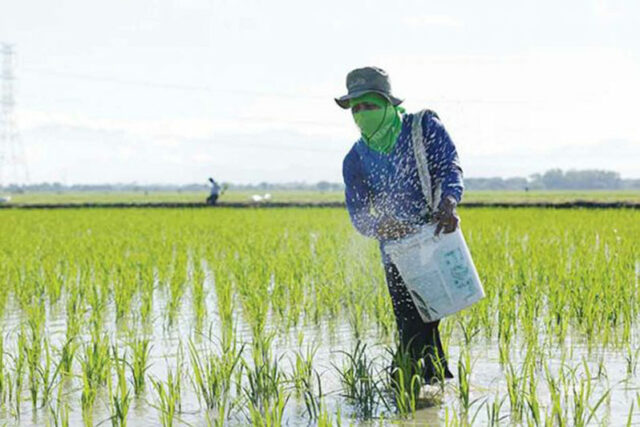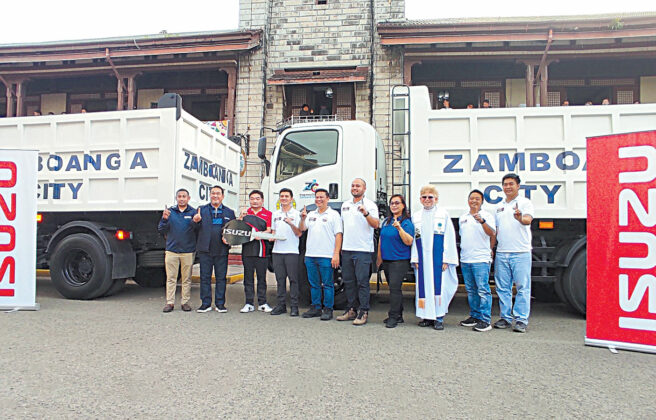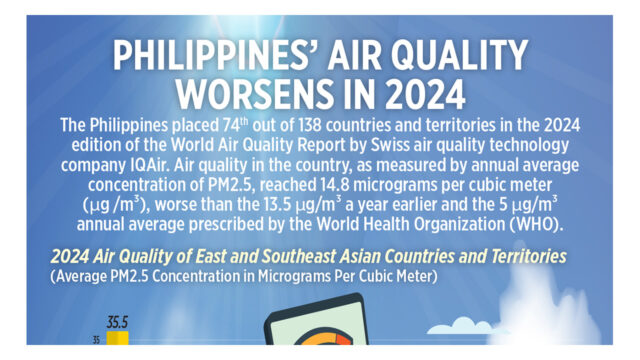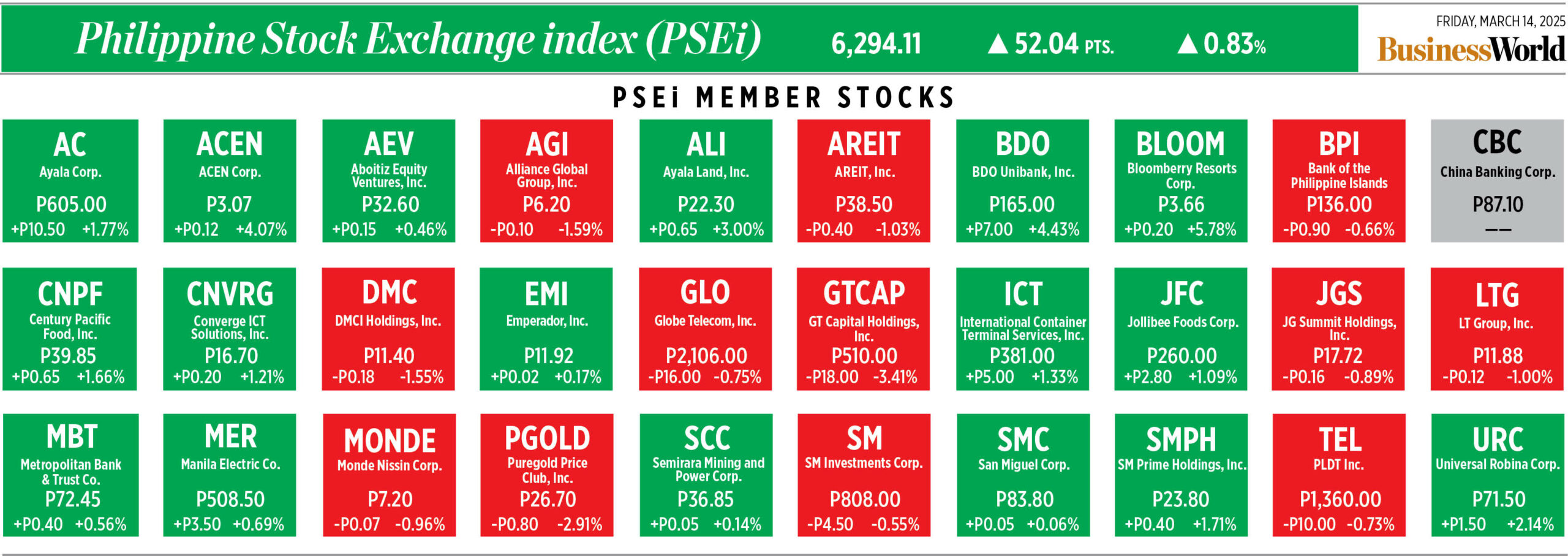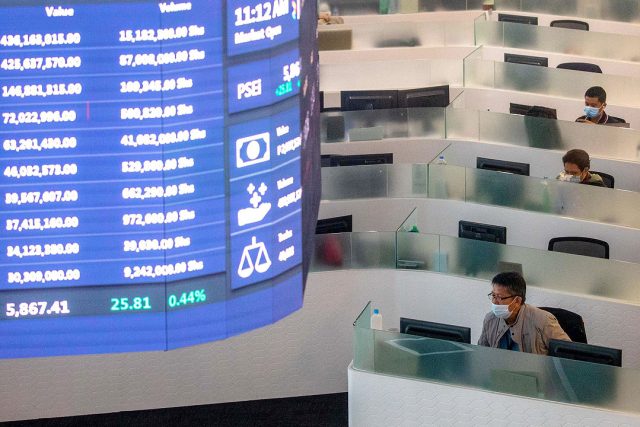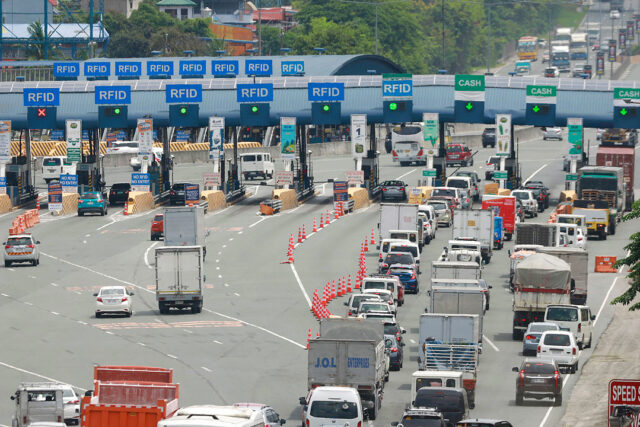Style (03/17/25)
Filipino designer John Herrera debuts in Paris
JOHN HERRERA made his debut during Paris Fashion Week this month revealing his haute couture “Femme A La Mode” collection at the city’s historic Salle De Wagram. In creating the 10 pieces positioned as an “homage to fashionable women throughout history,” Mr. Herrera cites his creative freedom, without being constrained by a specific creative direction, as the catalyst for the collection’s conception and development. The collection features luxurious fabrics including silk duchess satin, silk-cotton velvets, glass bugle beads, and Swarovski crystals. The bridal gown, which was the finale’s look, used yards of piña seda (a silk blend with a fabric derived from Philippine pineapples) for a veil, showcasing the best of fabrics native to the Southeast Asian nation. The full collection of 10 gowns can be seen online at johnherrera.co.uk and via Instagram @johnherrera.
Converse goes into archives for latest drop
CONVERSE’S latest Retro Running Collection has the brand diving into its archives to bring back the essence of vintage running shoes. Converse is rolling out three new lifestyle silhouettes — the Wave Trainer, Omni Trainer, and Omega Trainer — each rooted in the brand’s deep history in performance footwear. Inspired by classic designs from the 1980s, these silhouettes debuted with last year’s Run Star Trainer and continue with the upcoming 1980 Collection. The Wave Trainer is a reinterpretation of Converse’s classic running style of the same name, while the Omni and Omega are new silhouettes that draw inspiration from multiple Converse running shoes of the 1980s. A throwback to its 1989 predecessor, the Wave Trainer revives a Converse classic with its premium dual-layer suede and sport mesh upper. Retro colorways from the archive, an embroidered Star Chevron, and tonal reflective overlays bring an authentic vintage feel. CX foam cushioning (CX foam sock liner and CX foam midsole) and a PU Strobel ensure all-day comfort while the traction rubber outsole, inspired by styles from the Converse archive, not only enhances grip but also adds to the shoe’s original form. Pulling from the 1984 Converse Equinox, the Omni Trainer blends durability and sport-forward design. A nylon ripstop upper and suede overlays add structure and a retro sport look, while the CX foam midsole and sock liner offer a plush ride for everyday wear. Taking cues from the 1984 Thunderbolt and 1985 Converse Gazelle, the Omega Trainer keeps things light with a woven poly sport upper, suede accents, and an EVA midsole built for all-day comfort without the bulk. In addition to reviving classics, Converse has two collaborations: an all-new drop from Golf Wang and a tribute to one of the most iconic duos in animation, Tom and Jerry. Introducing the One Star CC Slip Pro, a skate-ready slip-on in partnership with Golf Wang merges laid-back styling with performance-driven details. CONS traction rubber enhances grip and board feel, while a CX foam sock liner provides plush comfort for all-day wear. As for the Tom and Jerry collaboration, it pays homage to the classic cartoon duo with a lineup of five bold sneaker designs, along with graphic T-shirts and hoodies for fans of all ages. The collection reimagines Converse’s most beloved silhouettes, including the Chuck Taylor All Star and Chuck 70, with animated graphics that capture the slapstick spirit of Tom and Jerry. And for those who like to get creative, the Converse By You platform lets fans customize with exclusive Tom and Jerry artwork. Available in both adult and kids’ sizes. Converse is available in Powerplant mall, select Ayala Malls, SM Malls, Robinsons Department Stores.
Furla redesigns space
FURLA introduces its take on the Light Refresh Concept (LRC), a retail design approach that seamlessly blends heritage, modernity, and accessibility. Rooted in Italian elegance and minimalism, this new concept reaffirms Furla’s commitment to innovation while preserving the brand’s signature sophistication. Located at the first level of Rustan’s Shangri-La Plaza, this newly redesigned boutique embodies lightness and adaptability. Soft, refined colors, premium materials, and thoughtfully curated spaces create an inviting environment where customers can immerse themselves in the beauty of Italian craftsmanship. Natural wood, champagne-colored metal, and warm hues cultivate a refined yet welcoming atmosphere, while an intuitive layout — structured around three key engagement zones: Introduce, Explore, and Experience — ensures a seamless and inspiring journey. Starting with the brand’s Florence and Corso Vercelli stores, the LRC ensures a consistent yet distinct execution across Furla’s global network, preserving the brand’s unique identity while allowing for local customization. In the Philippines, Furla is exclusively distributed by Stores Specialists, Inc., and has branches at Rustan’s Shangri-La, Rustan’s Makati, Rockwell, City of Dreams, Newport Mall, Rustan’s Cebu, and is available online at Trunc.ph, Rustans.com, and Zalora.
New Gap star: Parker Posey
THIS SPRING, Gap has launched the “Feels like Gap” campaign starring actor Parker Posey. Ms. Posey brings an optimistic energy and humor to each frame in support of Gap’s Spring 2025 lineup. The collection has a focus on soft fabrics, relaxed silhouettes, and versatile styling options. It expands on Gap’s bestselling fabrics including VintageSoft sweats and UltraSoft denim, made with a proprietary cotton-tencel blend — available in denim jeans, shirts and more. Gap’s Spring 2025 campaign launches globally this March, with the limited styles featured available to shop in stores and online. Gap is in Ayala Malls Manila Bay, Glorietta 4, Shangri-la Plaza Mall, SM Mall of Asia, SM Megamall, Trinoma, Alabang Town Center, and Abreeza, Davao, or shop online at gap.com.ph.







